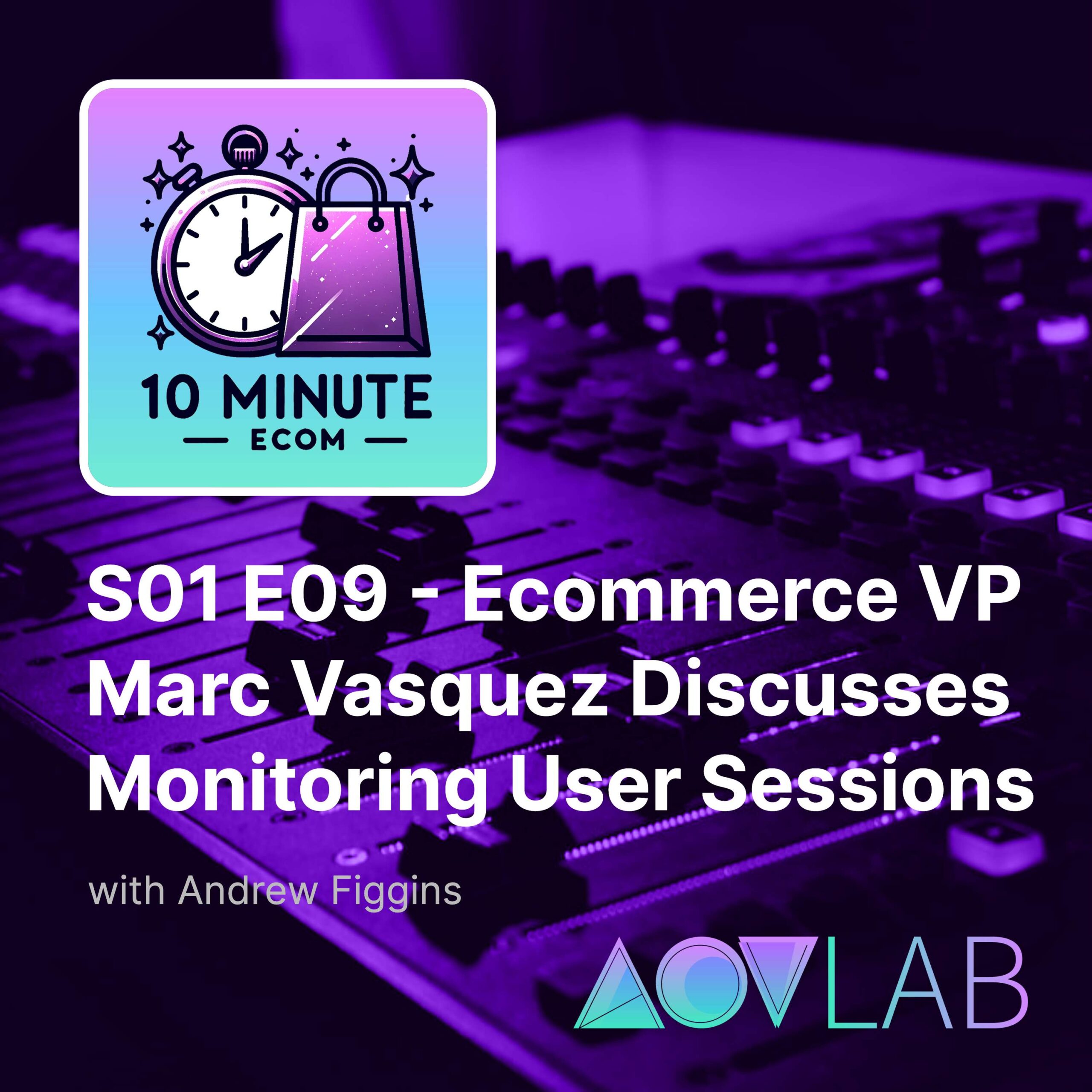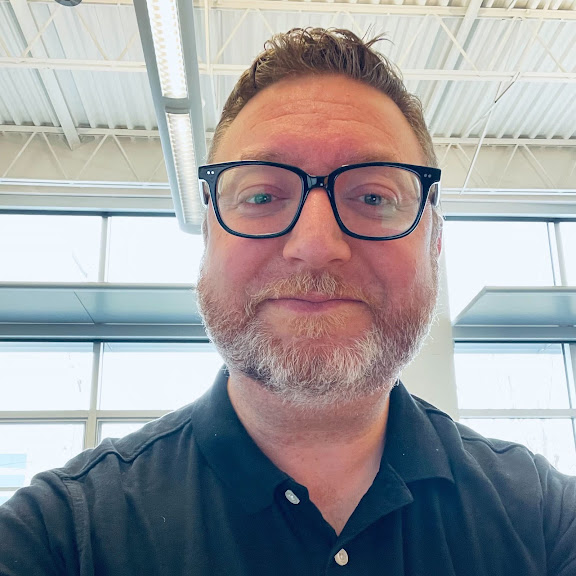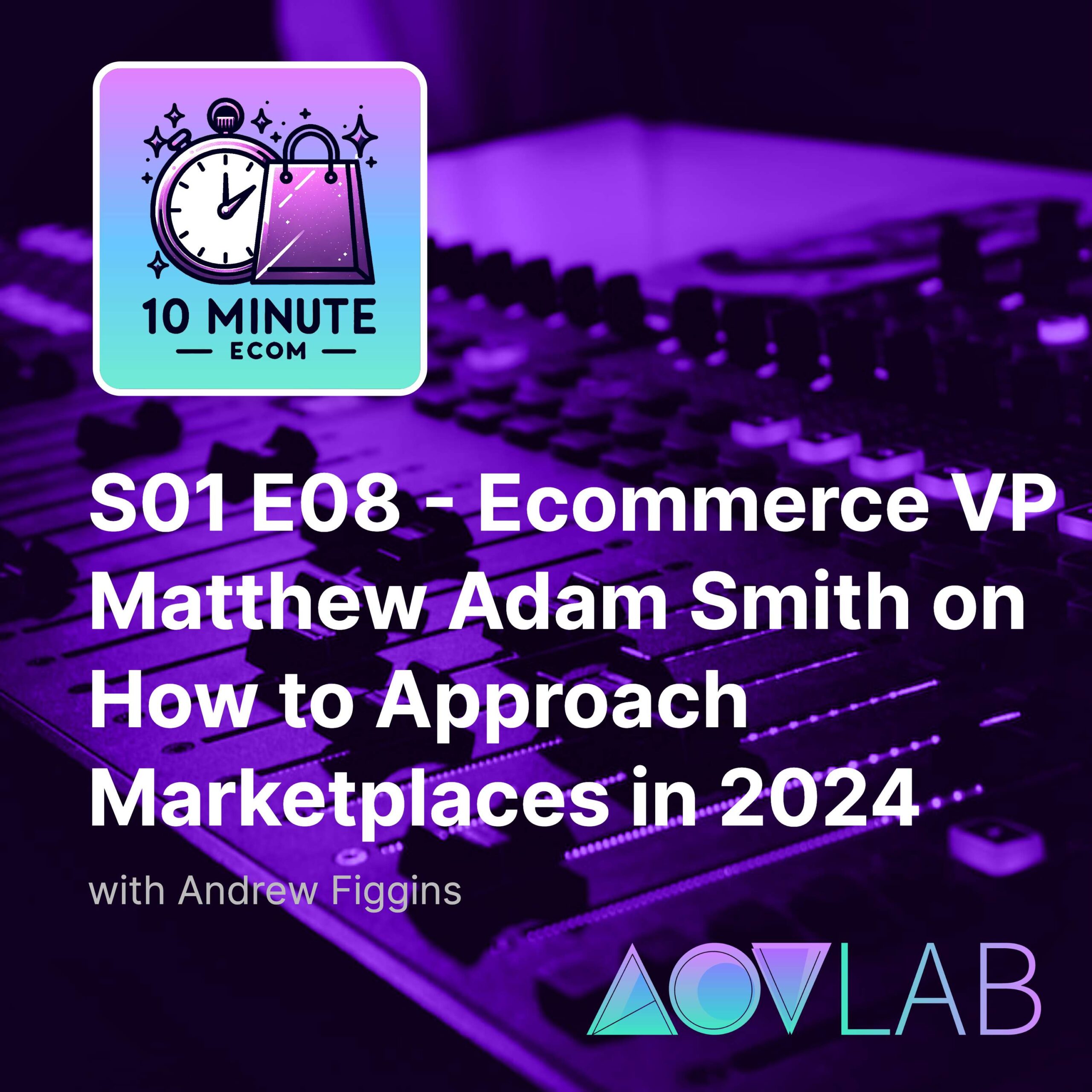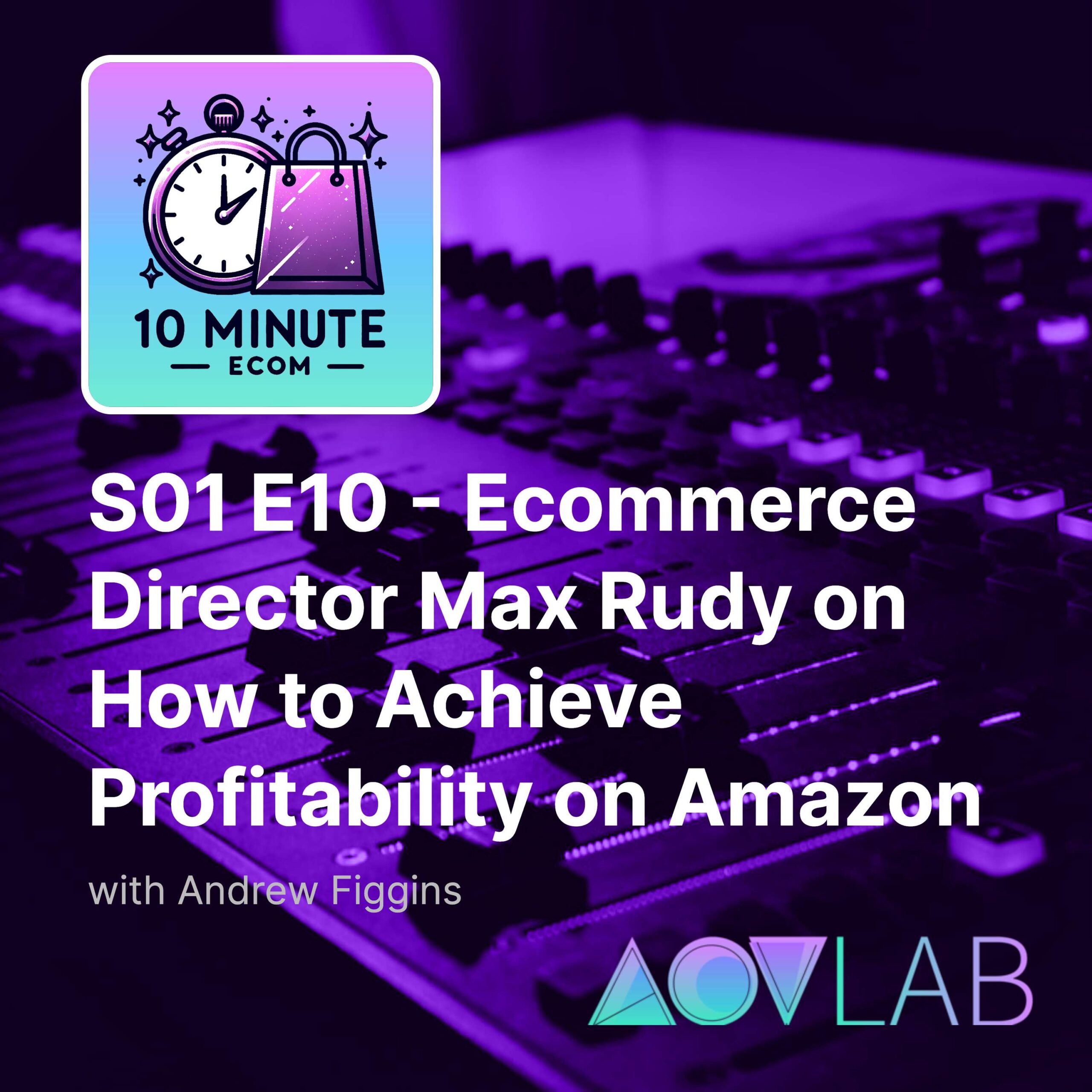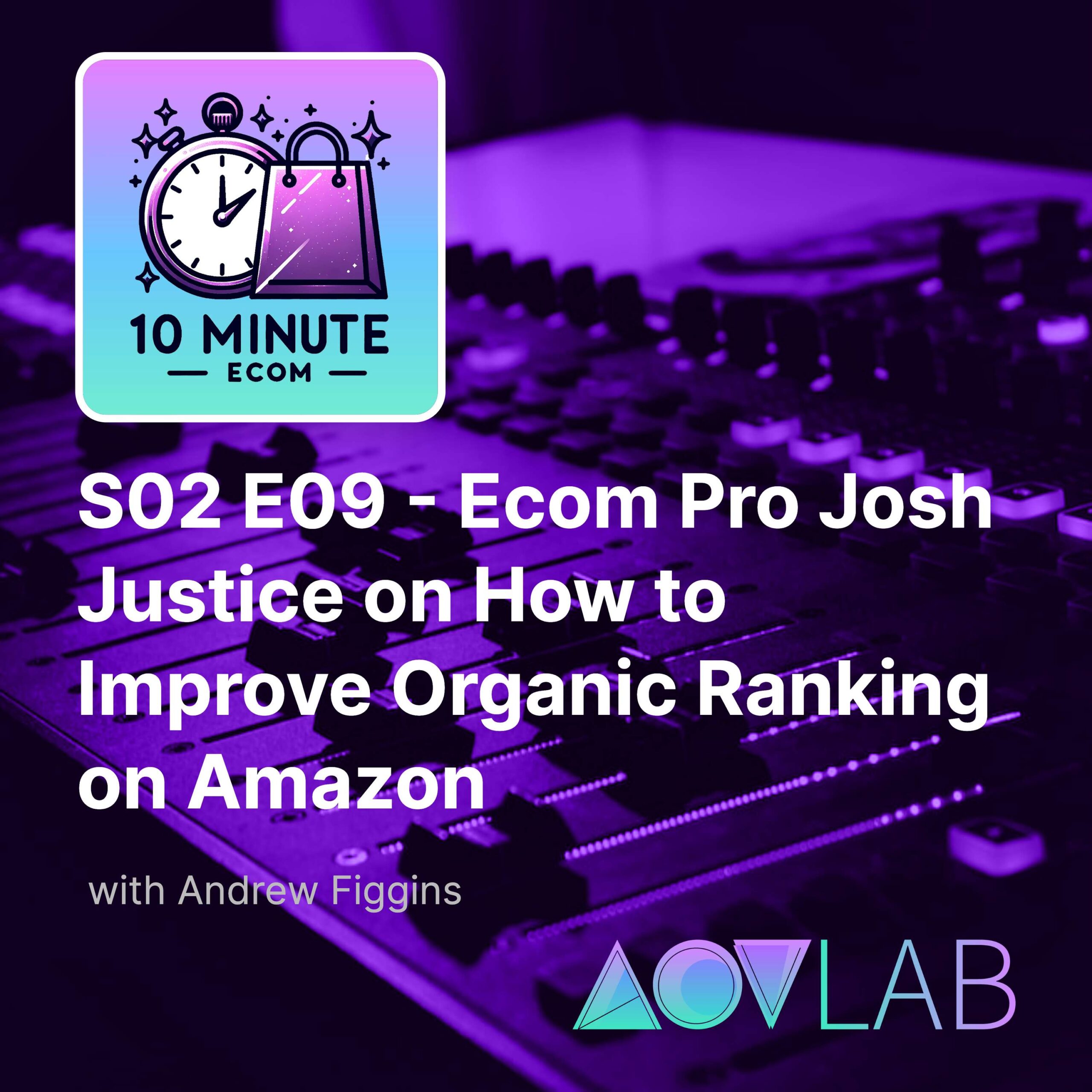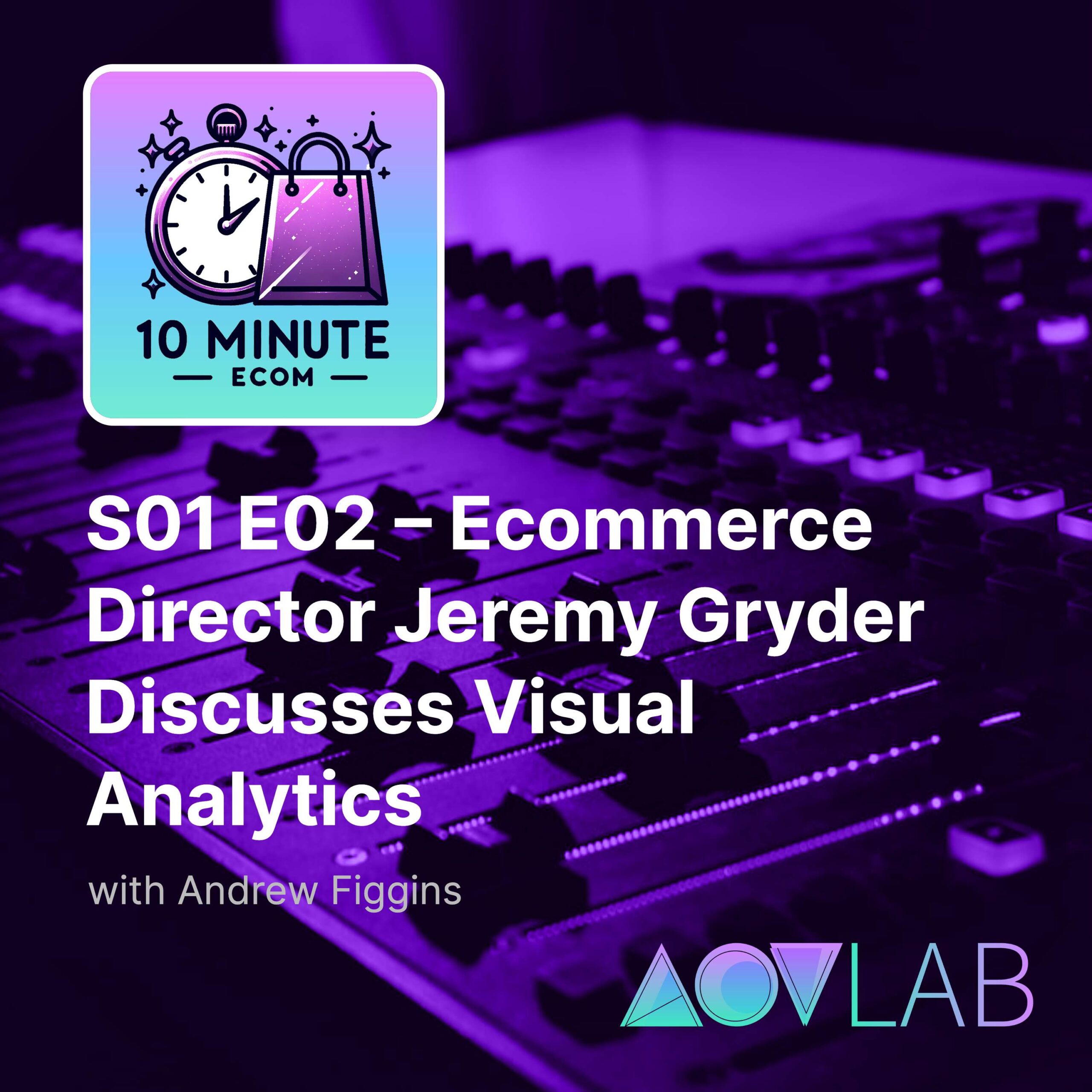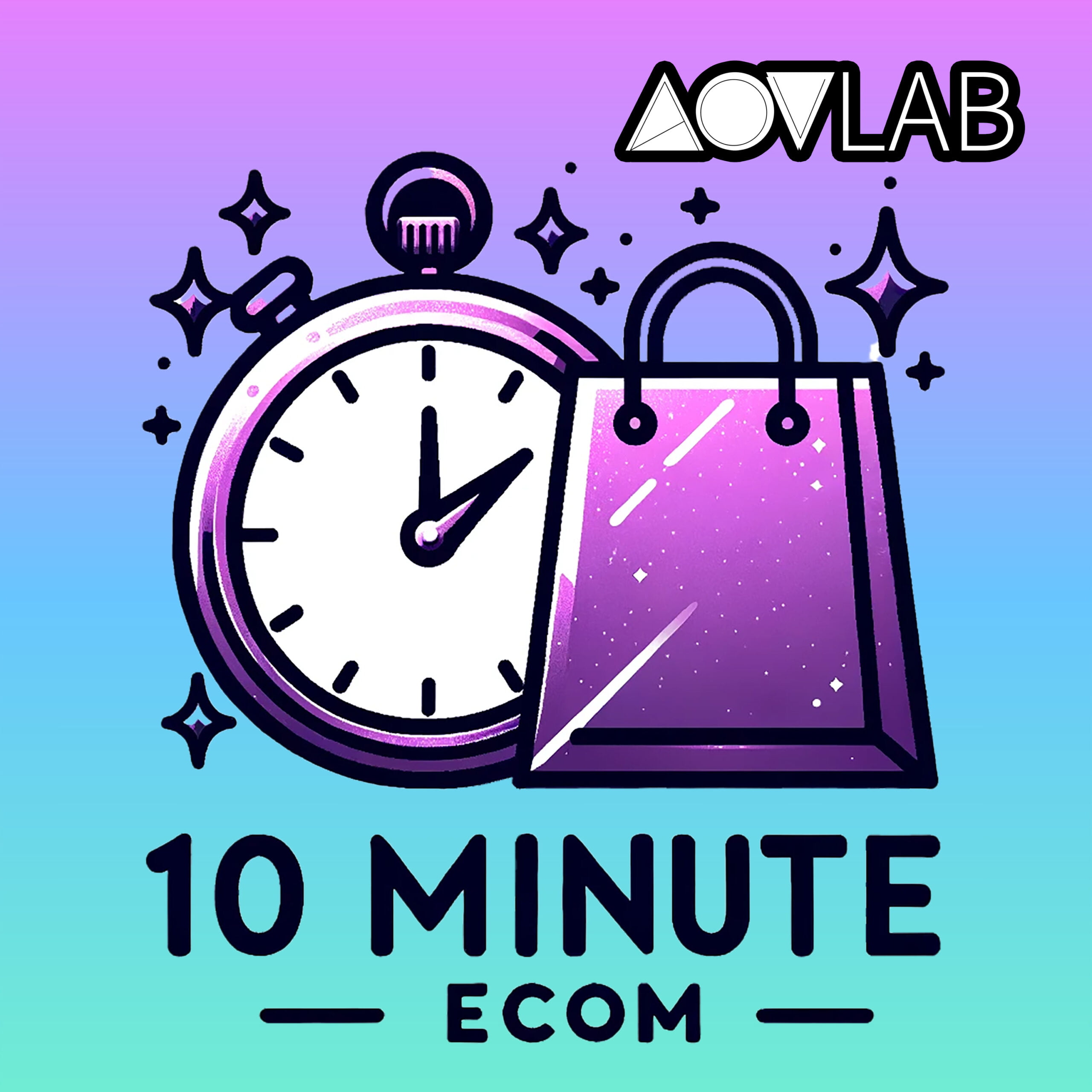Guest: Marc Vasquez, Ecommerce Director, Ideal TridonHost: Andrew Figgins, Founder, AOV Lab Episode Synopsis:Marc shares how he uses user monitoring to improve performance and customer experience on his websites. He also notes how “Hotjar Thursdays” help him rally his Ecom team to find and make incremental improvements that matter. Transcript: [00:00:15] Andrew: Hello Ecommerce fans, and welcome to 10-Minute Ecom, an AOV Lab podcast. Every episode, we break down a new and different tactic that can help you improve your ecommerce KPIs (key performance indicators). I’m your host, Andrew Figgins, and like most of you, I am an e commerce professional. You may […]
View Full Transcript
Episode Transcript
[00:00:10] Speaker A: Hello, ecommerce fans, and welcome to ten minute Ecom, an AOV Lab podcast. Every episode, we break down a new and different tactic that can help you improve your ecommerce KPIs key performance indicators. I'm your host, Andrew Figgins, and like most of you, I am an ecommerce professional. You may know me as the founder of AOV Lab, the former vp of product innovation at Scrubs and beyond, the former director of ecommerce technology at Rural King, or just from LinkedIn. Today I'm excited to be talking to Mark Vasquez, an ecommerce colleague that is doing incredibly interesting work in ecommerce, including for ideal Trident, a b to b ecommerce business.
Anyway, Mark, what did you come on the show to share today with your ecommerce colleagues?
[00:00:56] Speaker B: Hi, I'm Mark Vasquez, and I've worked in ecommerce for about nine years now with brands in the industrial and manufacturing space like ideal Trident and Zsi Foster. And prior to that, in the b to c world of fluid power.
The ecommerce tactic I'd like to chat with you about today is monitoring user sessions and seeing how you can use that to improve your overall site performance and conversion.
[00:01:18] Speaker A: Thank you, Mark. After the ad, we'll get right into the chat.
Today's episode of Ten Minute Ecom is brought to you by constructor IO. If your website isn't relying on constructor's machine learning algorithms to power your site search recommendations and quizzes, you are leaving money on the table. And I know what you're thinking. The host of this show, Andrew Figgins, not only can he host the show, but he can also read podcast ads that he wrote. Is this man proving right now that he's a double threat? Not a triple threat, just a double threat. You're not wondering that? Okay, back to constructor. I saw up close just how effective constructor's technology is, having implemented it at scrubs and beyond. It's also trusted by Sephora, life is good, Birkenstock, Ashley Vedelbos, Petco, Backcountry plow and hearth, and even target Australia. Go to AoV Lablab.com and click on Vendor Network to set up your 30 minutes discovery call with constructor today.
And now back to the show.
[00:02:28] Speaker C: Awesome. Mark, I'm excited to talk about user monitoring with you a little bit. And we were just chatting right before the recording started, and you had a very interesting way of putting this. Like, you're the guy building the website, you're the guy coding. You're not the person on the website. So can you explain a little bit about user monitoring, what it is?
[00:02:48] Speaker B: Yeah, for sure, Andrew, 100%. I find that I am often reading the label from inside the jar as a great quote from a book I've read about conversion rate optimization. And as someone who's using our websites on a daily basis and writing the code, to me, things seem really obvious. And to a user who's coming to the site, it may not be. So we leverage tools both paid and free, such as Hotjar or Microsoft clarity. And there's many others out there to both record sessions offer us heat maps and offer feedback widgets to the website where we can figure out what customers are doing and where they might be getting stuck. One of the really cool things I found in these tools is they monitor and show you rage clicks, which I'm sure you and I have both done a bunch of on a website where you're clicking on something and saying, why is nothing happening? And we find that our users are clicking on areas or buttons or images that we think are just content and they're just there, but they're expecting to be able to interact with it or do more. So that's been one thing that's been really insightful is to be able to see where are people clicking that we're not actually offering them anything that they could be using to continue to guide their journey, whether that's product research or actually converting.
[00:03:55] Speaker C: Excellent. And where do you feel like this whole idea of user monitoring came to you? Was this something that you heard about at a conference or you read about online?
Where did you encounter this for the first time?
[00:04:09] Speaker B: Yeah, great question. So probably a few years ago, I was at a conference and people were talking about doing CRX conversion monitoring type stuff. And I looked into it a little bit more on my own and came across Hotjar as the first one, which at the time offered a free plan and a paid plan. And since then there's been many tools similar to that. I've tried a variety of them. They do a really nice job with it, but I found that it really is something that I think is overlooked by a lot of ecommerce professional. There might be teams at their company that do this, along with marketing and sales and other functions. But one of the things I implemented with my team was we would actually take a day every week, we called it hot Jar Thursdays at the time, and we would actually sit down and we would go through the multiple websites we have and we would have a specific path. We'd look at certain session recordings that are under a certain amount of time, over a certain amount of time include rage clicks, exclude rage clicks. So we had a checklist and we would use that to see in a quick 1 hour meeting what are three or four actionable things we can take away right now and change to the website. And every week we walked away with stuff saying, I would never have guessed that a customer went there or clicked on that button or did this. And so we were able to dig in and really start to make action on those insights.
[00:05:18] Speaker C: That's amazing. I love the idea of getting your team together like that once a week. And man, if I was still in my last role, I would totally steal.
[00:05:28] Speaker B: That tactic because I like the idea.
[00:05:30] Speaker C: Of the team getting together and everybody's seeing the same data. I think in ecommerce something that happens sometimes is that at times one person will get out ahead a little bit and will be like the subject matter expert for organic search or paid search or one thing or another, which is fine, but I like the idea of you sitting down with that whole team there. Everybody's on an even playing field in a way. Can you just explain what did that do for the team? Did it lift them up?
[00:06:01] Speaker B: Yeah, absolutely. I think one of the coolest parts of it was I got a wide cross section because my team was diverse. So I was able to see both how people of different generational gaps might interact with the site or might think through a problem. That's one of the big things I'm seeing with AI coming out with other tools. Everyone's talking about these generational gaps. As more boomers exit the market and more gen Z and now gen Alpha and whatever else we're calling them now are coming in. People are interacting with devices very differently. The way I grew up, using a computer with a mouse and dial up and expecting certain things, is way different from someone who's never even technically used a computer. Some people have only ever used tablets, cell phones, other smart devices. And so having that wide cross section on my team, being able to see what they expect the website to do or where they expect to be able to do things and interact with it was really eye opening as well. And it brought all of us a lot of joy because we were able to collaboratively come up with what we thought would be the best a b test or the best thing to try to do to resolve that problem we came across.
[00:07:01] Speaker C: Excellent. Tell me a little bit about your approach to a b testing. Have you been able to run some a b testing on your.
[00:07:08] Speaker B: Yeah, yeah, we used to use Google optimize rest in know they just retired that tool not too long ago and it was interesting. I read about that. They said that not as many people used it as you thought. And I thought it was a phenomenal tool. I know there's a lot of paid options and other programs we're exploring now, but we would do a b testing on a regular basis out of those hot jar sessions. We would basically look at either changing button colors or text changing location of buttons, changing where the page like content loaded in different sections. So maybe we moved some text up, move some text down. We would make simple style changes like that and then let that run for about 90 days and then come back together and meet about those changes. And oftentimes we were surprised at the results. Either it agreeing with our hypothesis that changing this button from green to red made a difference or it's saying no. Actually the wave site is working just fine and there is no need for change. So we found that to be really eye opening when we would actually combine the results of looking at user sessions with a b test data.
[00:08:03] Speaker C: Has there ever been something that just completely shocked you in terms of going back to the user monitoring a little bit and the user experience monitoring with some of the tools you mentioned up front? Has there been something that just completely shocked you that you found or shocked your team?
[00:08:20] Speaker B: I'd say the part that shocks everyone when I first show them a tool like that is I think there's still a lot of people that don't know it exists. The amount of data that every other website is collecting on us. I know privacy is a big concern and looking and seeing what you can actually gain from these session recordings is almost freaky because you're basically standing over the person's shoulder as they interact with your site. And I remember the first few times we looked at stuff, I was like, wow, this is almost weird or creepy. But then you start to understand that it's more normal and accepted. I think the other big thing was the lack of scroll. When you look at most pages, everyone talks about the fold that used to be the you never put content you want below the fold. And that was always the mantra and it really has held true all these years. When I look at most web pages that we've designed or that I've worked with or even other people I've interacted with in the field, so many people don't scroll. Like more than half of your content never gets shown the light of day, and it's only thanks to the algorithms and technology to bring people to your site from it, scraping that content. But it always amazed me because I'm always constantly scrolling through, reading more, looking for things. But so many people just land somewhere, scan with their eye and move on, and there is no thought of hey, what else could be on this page? That always surprises me. Just how few people actually get more than halfway down, or even three quarters of the way down at your website.
[00:09:33] Speaker A: That's insightful for sure. Is there anything else that's easy to overlook when it comes to a b testing?
[00:09:38] Speaker B: So I would say the biggest thing that people overlook when doing this type of work is just making sure that they track the changes and making sure that they do them with intention. If you're running 100 A B tests and you're getting all this data and you're changing all these things, you don't really have a good grasp of what is actually being changed and how the users are interacting with it. So make slow, iterative changes. It doesn't have to all happen overnight. And make sure that you're actively looking at the results of those changes. Because a lot of times people do the set it and forget it where they'll make a bunch of changes, they'll see some results, they'll make that permanent, and then they'll move on and never look at it again. And maybe three or four months later go back to that change, run another session on it and say, okay, we made this change three months ago. Let's see how customers have interacted overall. Do we need to a b test it further? Do we need to change something further? At the end of the day, being easy to do business with is the name of the game for e commerce. Everyone looks to Amazon as model. It is the super simple way shop, pay. I can buy something almost too conveniently sometimes with just entering my phone number and next thing I know it's showing up at my door. So making sure that your site is easy to work with and easy to use by doing something like session monitoring or heat mapping or any of those types of tools I think is a really great way to improve conversions, reduce bounce time, reduce other issues customers might experience when dealing with your brand.
[00:10:59] Speaker C: Awesome. Mark, thanks so much for coming on the show today. Really appreciate it.
[00:11:02] Speaker B: Yeah, glad to be here.
[00:11:04] Speaker A: We've hit that ten minute mark. So that's a wrap for today's episode. I want to again thank our guest Mark Vasquez. If you have a moment, be sure to subscribe like or follow the show on Apple Podcasts, Spotify, Amazon Music, Google Podcasts, or wherever it is that you listen. If you're an e commerce professional that would like to join for an upcoming episode, reach out to Humans at AoV lablab.com and a human will read and respond to your inquiry. I will just come out and admit that I am that human. I hope you enjoyed this episode of the show. Until next time, this is Andrew Figgins signing off and saying have a good one.
